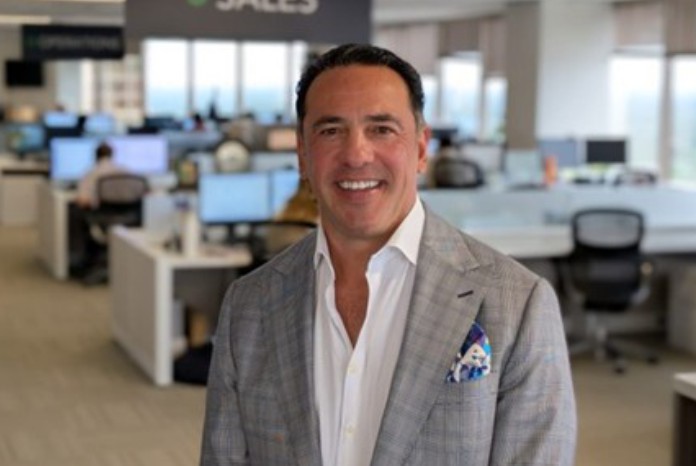Introduction
As impact investing continues to gain momentum, more funds are emerging that aim to generate both financial returns and positive social and environmental impact. One of the leading impact investors is the White Oak Impact Fund, a private debt fund focused on supporting small—to medium-sized enterprises (SMEs) across the United States. In this in-depth article, we will explore the White Oak Impact Fund’s overview, investment approach, portfolio composition, and impact metrics to provide a thorough understanding of this impact-focused fund.
Investment Focus and Approach
The White Oak Impact Fund was established in 2017 to provide growth capital to SMEs that also create impact. The fund focuses on businesses addressing issues such as workforce development, healthcare, education, and sustainable agriculture. When considering investments, White Oak looks for companies that fulfill basic needs, create decent jobs, or contribute to other UN Sustainable Development Goals.
The fund primarily invests in term loans, lines of credit, equipment loans, and real estate loans for amounts between $2-15 million at interest rates of 7-12%. Loan duration ranges from 3-7 years. White Oak Impact Fund takes a patient capital approach, working closely with portfolio companies to help them scale sustainably over the long term. They also provide non-financial support, such as advice on business planning, ESG best practices, and impact measurement methodology.
Portfolio Composition and Industries
As of 2022, the White Oak Impact Fund has committed over $300 million to over 70 companies across 25 U.S. states. The portfolio has a good mix of companies from various impactful industries. Healthcare makes up the largest allocation, with 26 companies providing services such as affordable eldercare facilities, rehabilitation centers, and medical equipment suppliers.
Education is another primary sector, with ten portfolio firms involved in early childhood learning, skills training programs, and school infrastructure development. Other common industries include sustainable food/agriculture, with nine companies; workforce development, with eight companies; and renewable energy, with four firms investing in solar installations. Notable portfolio companies include Revolution Foods, which provides healthy meals to schools across low-income communities, and Community Council Mental Wellness, a provider of mental healthcare services.
Impact Metrics and Reporting
Being an impact fund, White Oak Impact Fund significantly emphasizes quantifying the social and environmental benefits generated by its portfolio firms. All companies must track predefined impact metrics relevant to their operations and report the data to White Oak annually. Some of the impact metrics reported portfolio-wide include:
Jobs created/maintained: Over 17,000 full-time jobs supported
People served: More than 800,000 individuals impacted
Greenhouse gas reductions: Equivalent to taking over 10,000 cars off the road annually
Renewable energy generated: Enough to power over 1,200 homes
Students receiving education: Approximately 100,000 students benefited from improved learning facilities
White Oak Impact Fund rigorously verifies impact data and publishes an annual report highlighting key metrics and case studies. The fund is also a signatory of impact investing principles like the IRIS catalog and remains transparent about its impact methodology and limitations. This reporting and accountability level is essential for impact investing growth.
Financial Performance

In addition to having a strong social impact, the White Oak Impact Fund has also delivered positive financial returns since its inception in 2017. As of 2021, the portfolio has a default rate of less than 1%, and 98% of all loans remain in repayment. The fund’s net IRR stands at over 8%, outperforming traditional fixed-income alternatives in both bull and bear market conditions. While impact and financial returns are not always correlated, White Oak demonstrates that impact investments do not necessarily have to compromise on profits.
Investment Decision Process
White Oak Impact Fund investment team conducts extensive due diligence on prospective companies when evaluating new investment opportunities. This involves reviewing financial projections, meeting management teams to assess operational strengths, and analyzing a company’s impact thesis. Site visits are also conducted to verify impact claims. Eligible companies must demonstrate clear positive impact and financial projections to ensure loan repayment. The team then presents the investment case to White Oak’s in-house credit committee for review and approval before any funding is released.
Support for Portfolio Companies
Post-investment, White Oak Impact Fund remains actively involved with portfolio firms to help maximize their impact and growth potential. A dedicated client services team works closely with management on operational aspects. They provide guidance on impact measurement practices, connect companies to relevant networks, and facilitate professional development programs. The team also helps portfolio firms access additional funding for expansion through follow-on investments or by introducing them to other potential investors.
Track Record of Exits
Since the fund’s inception, White Oak Impact Fund has seen successful exits from 11 portfolio companies that have repaid their loans in full plus interest. Notable exits include the 2019 sale of Revolution Foods to Kainos Capital and the 2020 refinancing of Solar Mosaic with a syndicate of banks. Proceeds from these and other exits are continually recycled into new impactful businesses, allowing the fund’s capital to support more enterprises over time.
Impact Thesis Development
During due diligence, White Oak Impact Fund helps refine a company’s impact thesis by identifying apparent social or environmental problems being addressed and metrics to quantify solutions. Over the investment period, the firm supports portfolio firms in deepening their understanding of stakeholders and impact pathways. This iterative process allows theories of change to strengthen organically based on real-world results and stakeholder feedback. Rigorous impact thesis development helps maximize the fund’s UN Sustainable Development Goals contributions.
ESG Integration
Environmental, social, and governance (ESG) considerations are fully integrated into White Oak’s operations and investment process. Internally, the firm practices sustainable operations and responsible sourcing. It also screens out companies causing direct harm or with significant ESG risks from its portfolio. Once invested, White Oak Impact Fund works with companies to establish appropriate management systems addressing climate impact, labor standards, and board governance over time.
Risk Management Approach
White Oak Impact Fund focuses on mitigating downside risks while preserving upside potential across its portfolio. It achieves diversification through multi-industry exposure and investments in various geographies. Strict underwriting ensures adequate cashflows and collateral for loan repayment. The firm also maintains low target portfolio default rates through active management support. In times of stress, White Oak is flexible with modifications to keep companies operating versus distressed sales. A strong risk-adjusted return track record demonstrates the effectiveness of this prudent approach.
Read more: Andre Hakka house: Step inside the lavish $13M Mediterranean oasis in Coral Gables
Conclusion
Through this in-depth analysis, we aimed to provide a comprehensive overview of the White Oak Impact Fund – its approach, portfolio, impact themes, metrics, and financial performance. As one of the pioneering impact debt funds, White Oak sets a high standard for others to match to deliver targeted social impact at scale alongside competitive returns. The fund’s reporting transparency also advances the responsible investing movement. Looking ahead, White Oak will likely continue expanding its impactful work through new investments in critical sectors.










